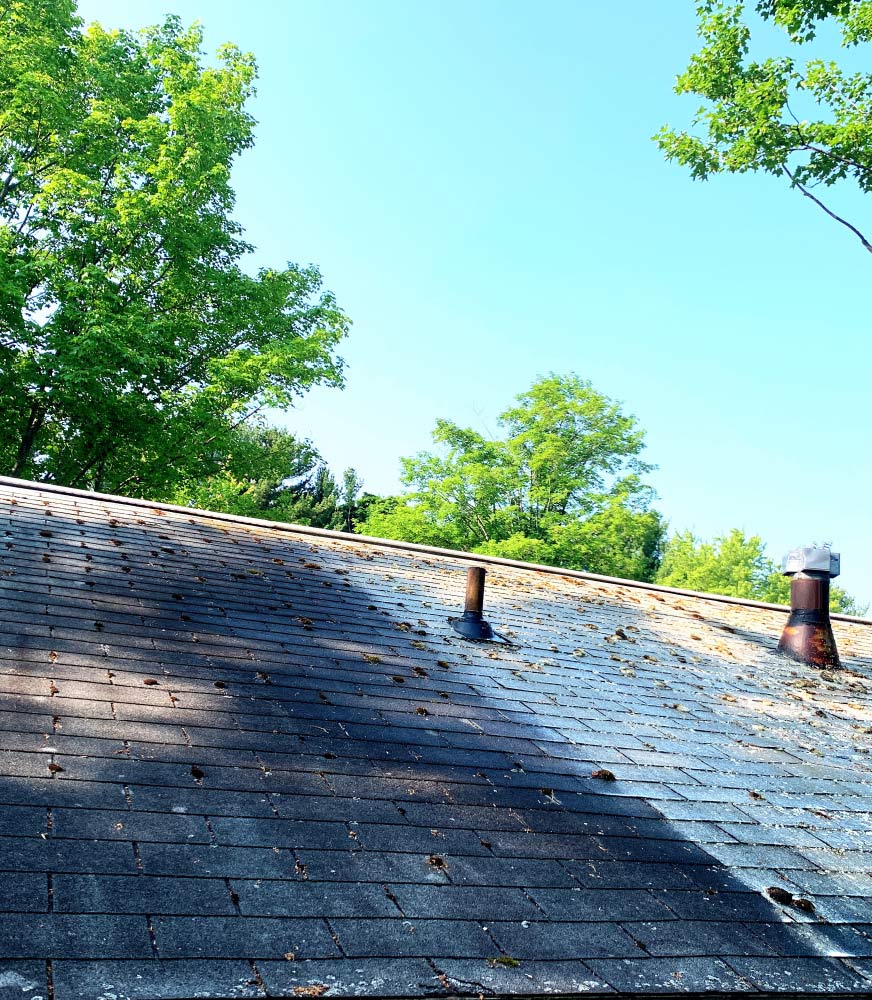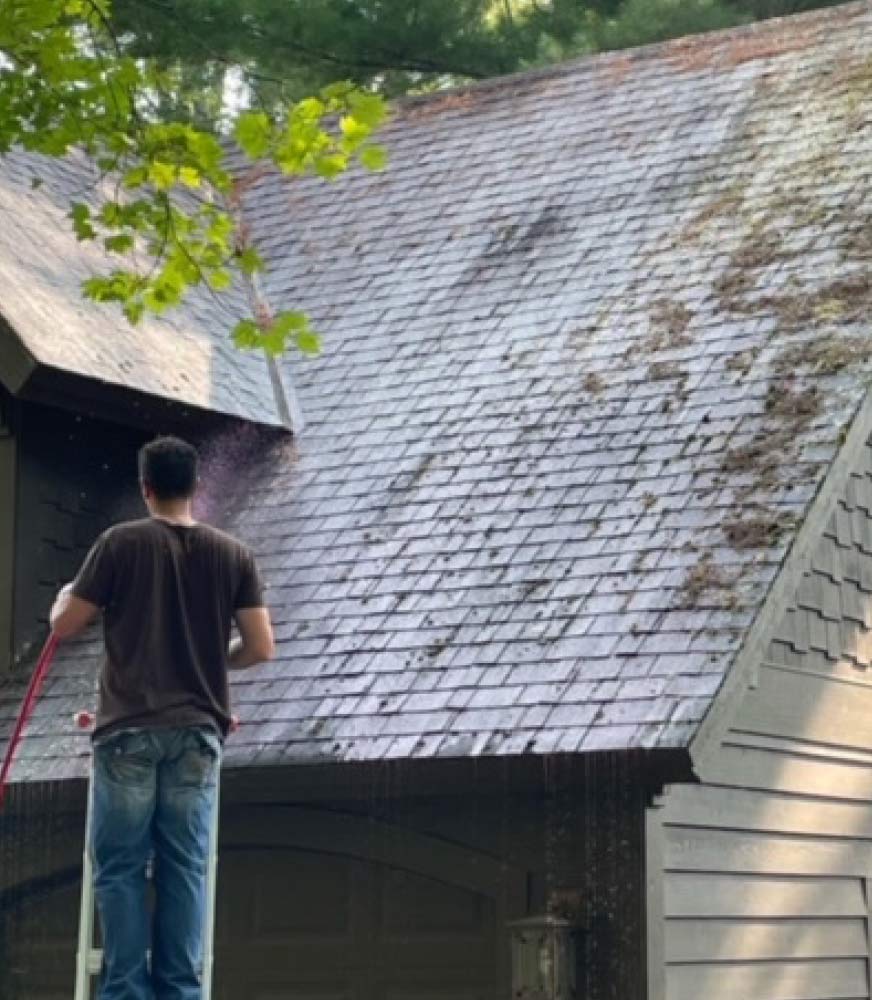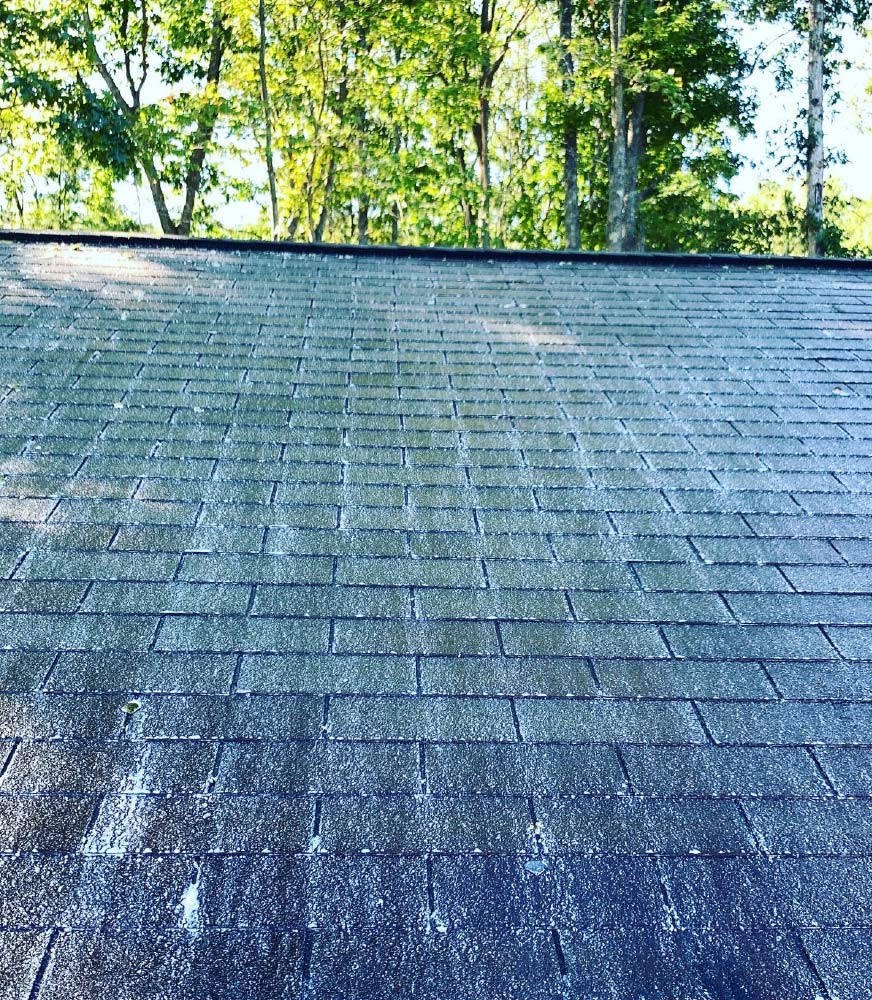ROOF WASHING
A FUNGUS AMONG US
Ever heard of Gloeocapsa magma before? Perhaps not, but we guarantee that you’ve have seen it. So what is this exactly? Often mistaken as mold or mildew, the black discoloration and streaks visible on many roofs across the United States and Canada is a live algae called Gloeocapsa magma, which is a growing concern in our current time.
WHY DOES THIS ALGAE SEEM TO LOVE OUR SHINGLES SO MUCH LATELY?
A predominate filler used in composition shingles to replace copper and oil components, is limestone. Because it is so plentiful and inexpensive, manufactures switched to limestone to reduce the cost and keep expenses down. These fillers replace some of the oils in the shingles. Of course, those oils are normally the most costly component of the shingle itself. Removing the oils often seems to shorten the lives of the shingles, making them less resilient and supple. Since limestone became the replacement filler, It is the calcium carbonate in limestone that Gloeocapsa magma really likes to feed off of, along with moisture that naturally collects on a roof’s surface.
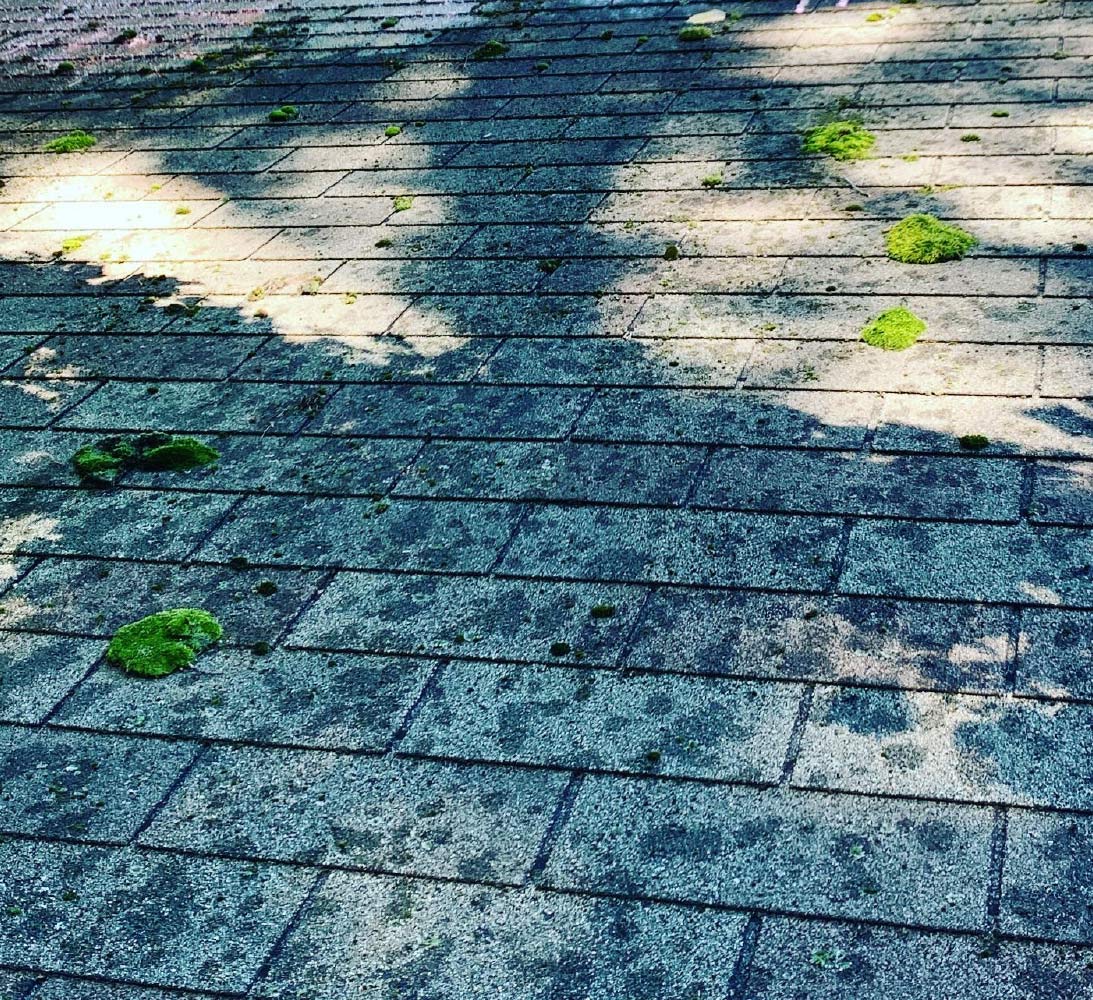
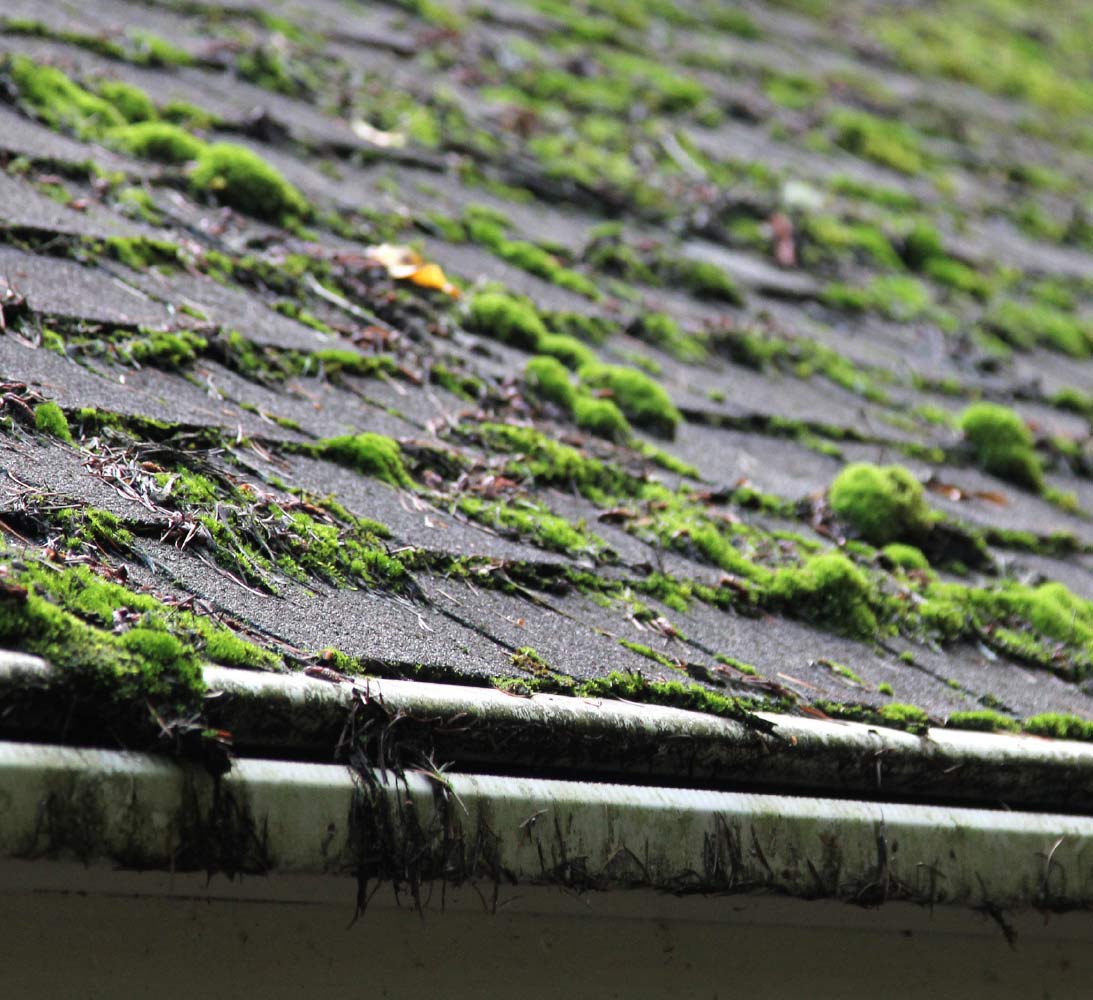
ANOTHER COMMON ENEMY OF THE ROOF IS MOSS.
In North America, moss tends to grow on north facing roof planes that receive less direct sunlight and stay damp longer than south facing planes. Moss spores may also be carried by wind or animals and can easily spread throughout neighborhoods. Unlike algae, moss can be detrimental to asphalt shingle performance. Moss can cause the leading edges of the shingles to lift or curl, which increases the risk of shingle blow-off during wind events.
In severe cases, moss build-up can cause lateral water movement resulting in moisture damage to the roof deck or may even cause leaks.
MOVING ON, NEXT UP ON THE LIST IS LICHEN.
This type of roof growth is a combination of algae and fungus. When these two growths get together they can produce organisms living on your asphalt & metal roofs. The lichens will use their perennial root structure to attach tightly and stubbornly to roofing surfaces which makes them extra difficult to remove and can damage your roof permanently and can even cause surface rust on metal roofs which can turn into structural damage weakening your roof’s composition.
Don’t wait until it’s too late!
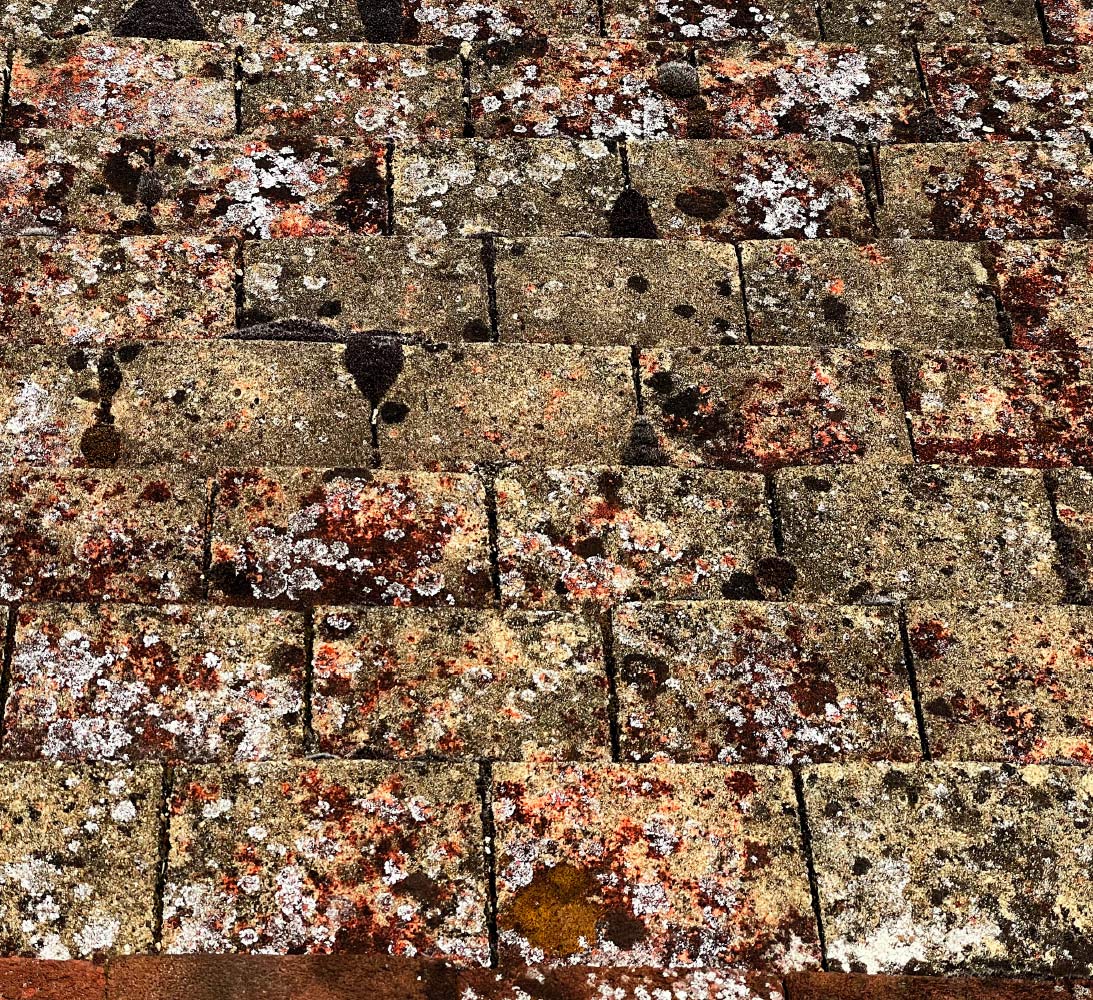
WHY DOES THIS ALGAE SEEM TO LOVE OUR SHINGLES SO MUCH LATELY?
A predominate filler used in composition shingles to replace copper and oil components, is limestone. Because it is so plentiful and inexpensive, manufactures switched to limestone to reduce the cost and keep expenses down. These fillers replace some of the oils in the shingles. Of course, those oils are normally the most costly component of the shingle itself. Removing the oils often seems to shorten the lives of the shingles, making them less resilient and supple. Since limestone became the replacement filler, It is the calcium carbonate in limestone that Gloeocapsa magma really likes to feed off of, along with moisture that naturally collects on a roof’s surface.

ANOTHER COMMON ENEMY OF THE ROOF IS MOSS.
In North America, moss tends to grow on north facing roof planes that receive less direct sunlight and stay damp longer than south facing planes. Moss spores may also be carried by wind or animals and can easily spread throughout neighborhoods. Unlike algae, moss can be detrimental to asphalt shingle performance. Moss can cause the leading edges of the shingles to lift or curl, which increases the risk of shingle blow-off during wind events.
In severe cases, moss build-up can cause lateral water movement resulting in moisture damage to the roof deck or may even cause leaks.

MOVING ON, NEXT UP ON THE LIST IS LICHEN.
This type of roof growth is a combination of algae and fungus. When these two growths get together they can produce organisms living on your asphalt & metal roofs. The lichens will use their perennial root structure to attach tightly and stubbornly to roofing surfaces which makes them extra difficult to remove and can damage your roof permanently and can even cause surface rust on metal roofs which can turn into structural damage weakening your roof’s composition.
Don’t wait until it’s too late!

IN CONCLUSION
Roof cleaning is effective and important. Hiring a professional roof cleaning company may be the way to go for your roof. They’re going to have all of the proper equipment and will protect your landscape along with reducing liability because their pumps can reach high enough that they do not need to climb on the roof to clean it in many cases. Any roof wash should be done with a low pressure, soft wash type application.
Have your roof cleaned to extend the life of your investment, we all know it wasn’t cheap.
WHAT OUR CLIENTS SAY
Value
Thank you Rob what a great job. Oh, and I almost forgot the price was great also thank you!
Michael F
Professional
Easy to work with, prompt to respond and did a great job with our restaurant windows.
100 Acre Hospitality
Results
Can’t recommend enough! They made my house look fantastic. Great customer service and communication.
Mark B
CONTACT US
We understand that every situation has unique cleaning needs. For the fastest service, fill out the form below or call/text us at 231.268.4277
Your time is valuable and we will make sure to get back to you as soon as we can.
We take your personal information very seriously. We will not share any of the provided information with 3rd party companies. All provided information will be confidential and only used specifically within the means of Germ General to connect with you.

